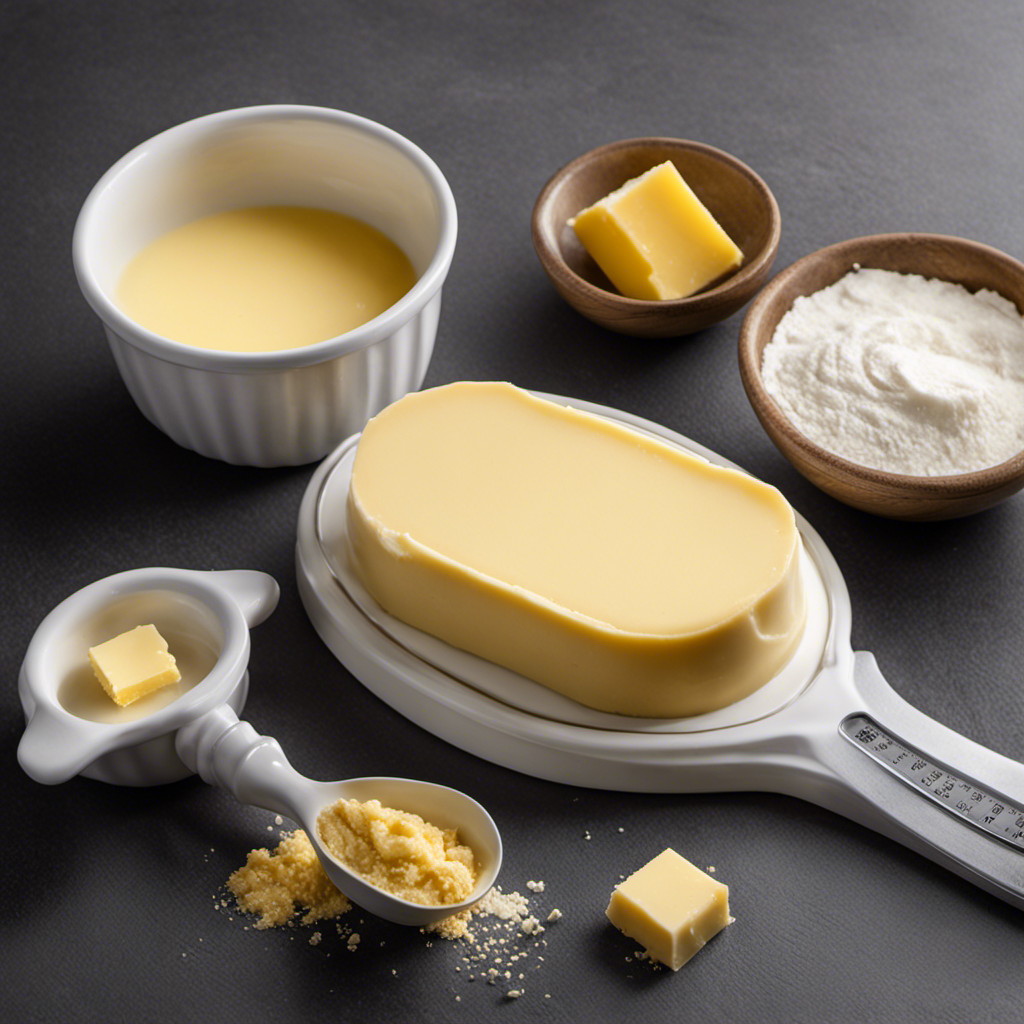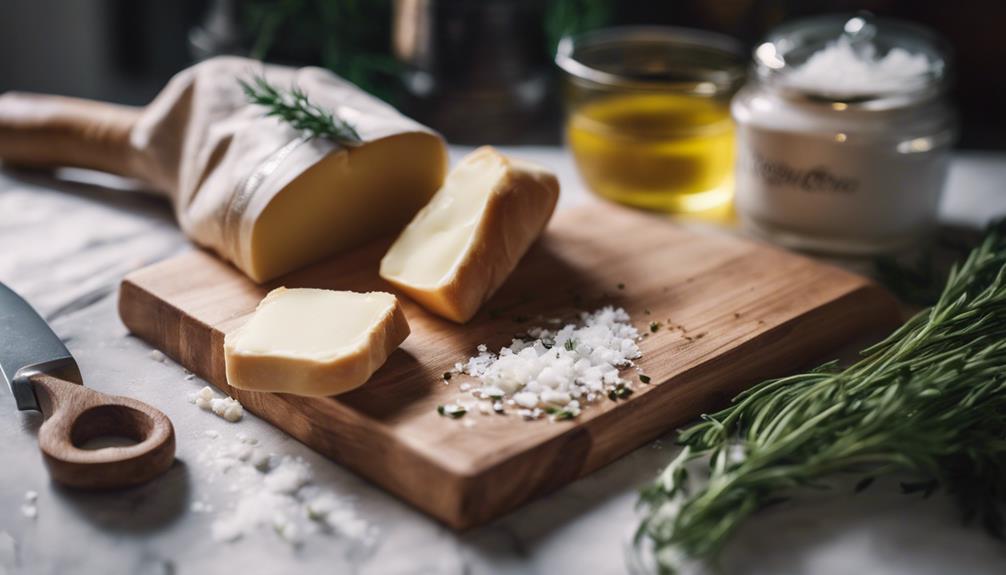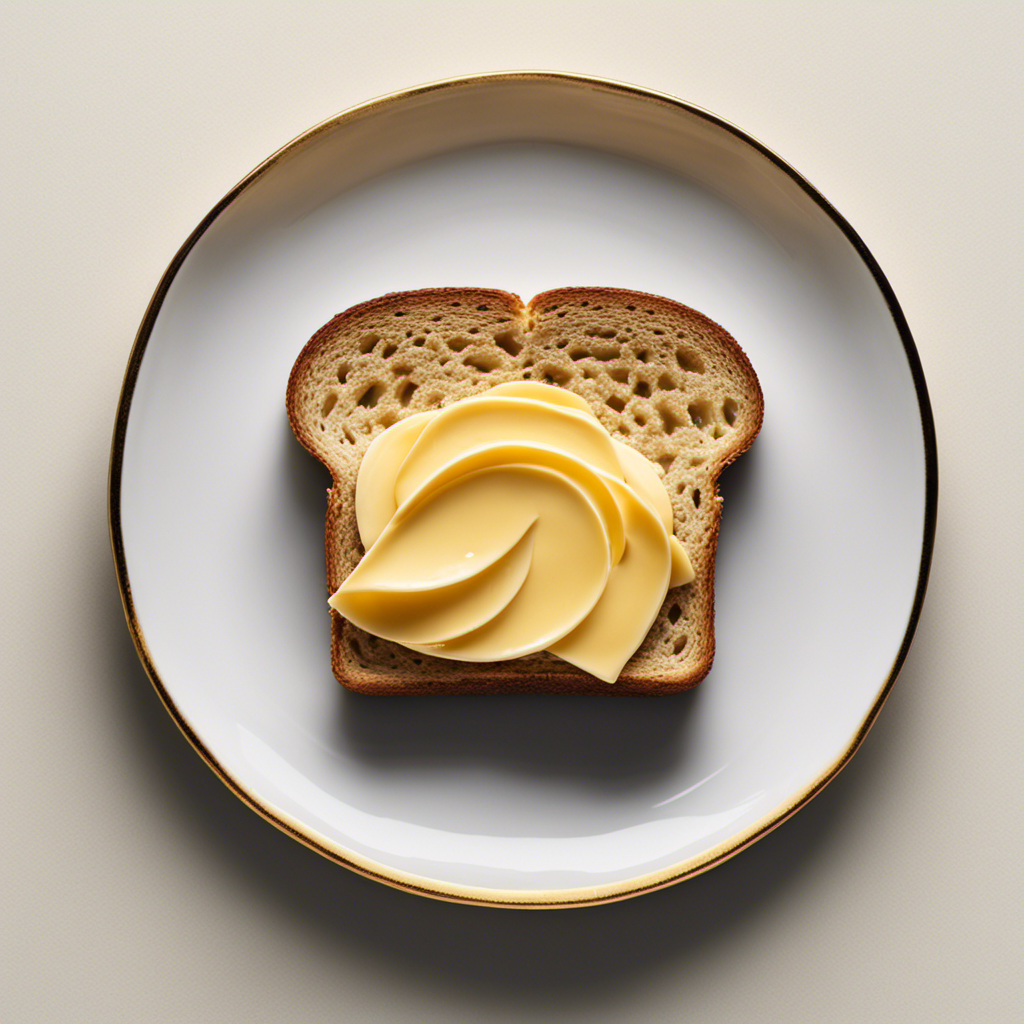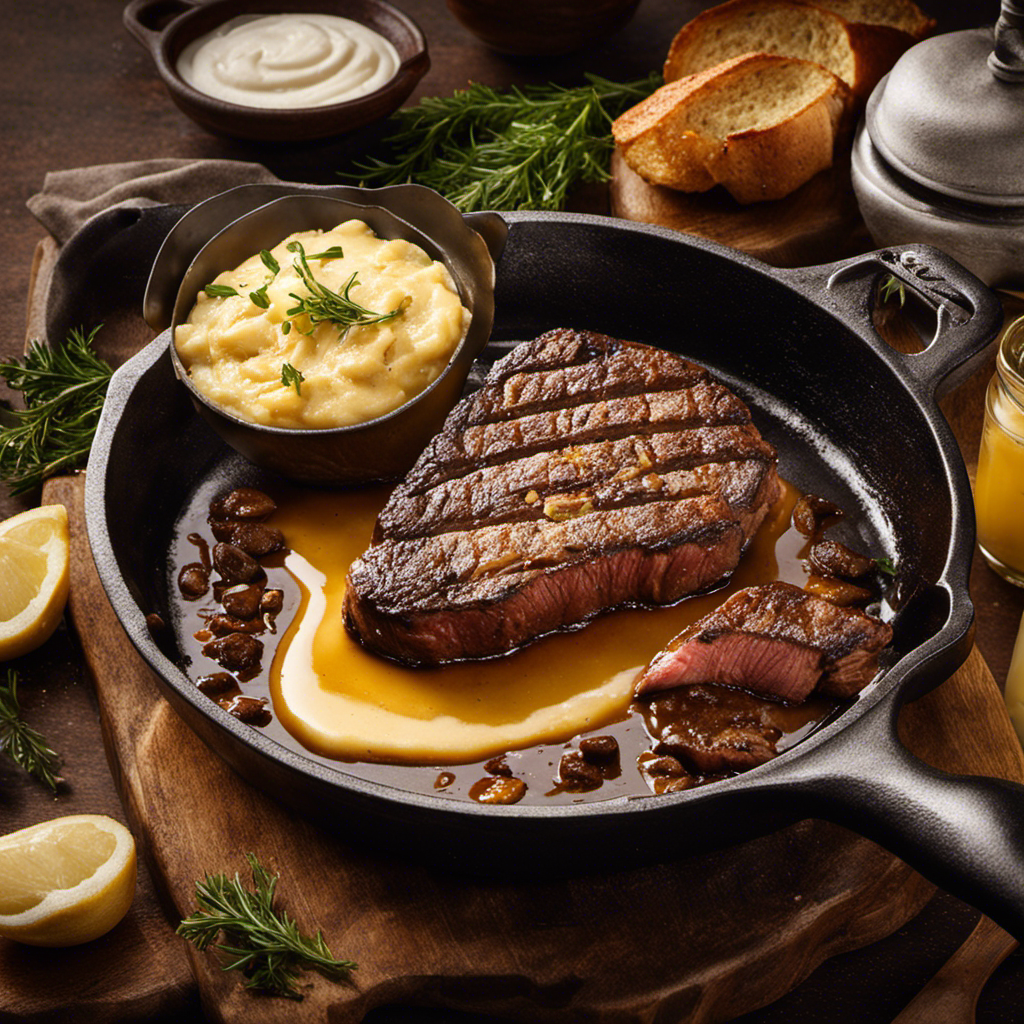As a frequent home cook, I often find myself contemplating the exact measurements of ingredients required. One particular query that has frequently crossed my mind is, ‘What exactly is half a stick of butter?’ Although it may seem like a simple question at first, in the realm of cooking and baking where precision is key, even the smallest gram is significant.
In this article, we will delve into the world of butter measurements, decode stick butter sizes, and explore the best ways to convert and measure half a stick of butter. Get ready to master the art of precision in the kitchen!
Key Takeaways
- Half a stick of butter is equal to 1/4 cup.
- A standard stick of butter weighs 4 ounces or 113 grams.
- Butter conversion chart provides precise measurements for different quantities of butter.
- Weighing butter on a kitchen scale is the most accurate way to measure it.
Understanding Butter Measurements
Half a stick of butter is equal to 1/4 cup. When it comes to measuring butter equivalents, it’s crucial to understand the conversions accurately.
To simplify this process, a butter conversion chart can be immensely helpful. The chart provides precise measurements for different quantities of butter, ensuring accurate results in recipes.
A standard stick of butter typically weighs 4 ounces or 113 grams. This means that half a stick of butter weighs around 2 ounces or 57 grams. By knowing these measurements, you can confidently adjust recipes according to your desired amount of butter.
Utilizing a butter conversion chart allows for scientific precision in the kitchen, ensuring that your butter measurements are always accurate.
Decoding Stick Butter Sizes
There’s no better way to understand stick butter sizes than by decoding them. Stick butter is a common form of butter packaging available in the market.
Here are some key points to consider when it comes to stick butter sizes:
-
Regular stick butter: This is the most common size, measuring approximately 4 inches long and weighing 1/2 cup or 1/4 pound (113 grams). It is usually wrapped in wax paper or foil to maintain freshness.
-
Smaller stick butter: Some brands offer smaller sizes, such as 1/4 cup or 1/8 cup portions. These are convenient for recipes that require lesser amounts of butter.
-
Butter substitutes: For those who prefer alternatives to traditional butter, there are various options available. These can include margarine, vegetable oil spreads, or plant-based butters made from ingredients like coconut oil or avocado.
Understanding stick butter sizes is essential for accurate measurement in recipes. Whether you choose regular or smaller sizes, or opt for butter substitutes, knowing the precise measurements will ensure the desired results in your culinary creations.
Converting Half a Stick of Butter
Converting a stick of butter to a smaller portion can be easily done by cutting it in half. This method is simple and effective, allowing you to have the exact amount of butter you need for your recipe. But what if you need even smaller portions? Converting measurements can be a bit tricky, especially when it comes to butter quantities. To help you out, I have created a table below that shows the different measurements for converting a stick of butter:
| Stick of Butter | Cups | Tablespoons | Teaspoons | Grams |
|---|---|---|---|---|
| 1 | 0.5 | 8 | 24 | 113 |
| 0.75 | 0.375 | 6 | 18 | 85 |
| 0.5 | 0.25 | 4 | 12 | 57 |
| 0.25 | 0.125 | 2 | 6 | 28 |
| 0.125 | 0.063 | 1 | 3 | 14 |
Using this table, you can easily convert a stick of butter to any desired measurement. Whether you need half a stick, a quarter, or even just a tablespoon, this table will guide you in converting the measurements accurately.
Estimating Butter Quantity
Estimating how much butter you’ll need for a recipe can be a bit tricky if you’re not sure about the measurements. However, there are some tips that can help you measure butter accurately.
Here are three important tips to consider:
-
Use a scale: Weighing the butter on a kitchen scale is the most accurate way to measure it. This eliminates any guesswork and ensures precise measurements.
-
Refer to volume conversions: If you don’t have a scale, you can use volume conversions. One stick of butter is equal to 1/2 cup or 8 tablespoons. This can help you estimate the amount of butter you need for your recipe.
-
Use the markings on butter wrappers: Many butter brands have markings on the wrappers that indicate tablespoons and cup measurements. This can be a helpful guide when measuring butter without a scale.
Tips for Measuring Half a Stick of Butter
To accurately measure the quantity, you can easily rely on the markings present on the butter wrapper.
However, when it comes to measuring butter alternatives or using butter substitutes, it can be a bit more challenging. Butter substitutes often come in tubs or spreads, which makes it difficult to determine the equivalent of half a stick.
One way to measure these alternatives is to use a kitchen scale. By weighing the desired amount, you can ensure accuracy in your recipe.
Another method is to use measuring spoons. For example, one stick of butter is equivalent to 8 tablespoons. Therefore, half a stick would be 4 tablespoons.
Frequently Asked Questions
Are There Any Alternatives to Using Half a Stick of Butter in a Recipe?
There are several alternatives to using half a stick of butter in recipes. You can substitute it with ingredients like applesauce, mashed bananas, Greek yogurt, or coconut oil to maintain the desired texture and moisture in baking recipes.
Can I Use Margarine Instead of Butter When Measuring Half a Stick?
Using margarine as a substitute for half a stick of butter in a recipe has its pros and cons. It can affect the texture and taste of baked goods. Consider the desired outcome before making the substitution.
How Do I Measure Half a Stick of Butter if I Don’t Have a Measuring Scale?
To measure half a stick of butter without a scale, you can use the markings on the butter wrapper. Each stick usually has tablespoon markings, so just cut it in half along those lines.
What Is the Best Way to Store Half a Stick of Butter for Later Use?
The best way to store half a stick of butter for later use is to wrap it tightly in wax paper or plastic wrap and place it in an airtight container. Butter can be stored for up to a month in the refrigerator.
Can I Freeze Half a Stick of Butter for Future Use?
Yes, you can freeze half a stick of butter for future use. Freezing butter helps preserve its freshness and extends its shelf life. Additionally, you can use frozen butter for baking or cooking purposes.
Conclusion
In conclusion, measuring half a stick of butter may seem challenging at first, but with the right knowledge, it can be easily achieved.
By understanding butter measurements and decoding stick butter sizes, one can confidently convert and estimate the required quantity.
Remember the old saying, ‘A little butter goes a long way,’ and use this knowledge to create delicious, mouth-watering recipes.
With precise measurements and a scientific approach, your culinary adventures are bound to be a success.










